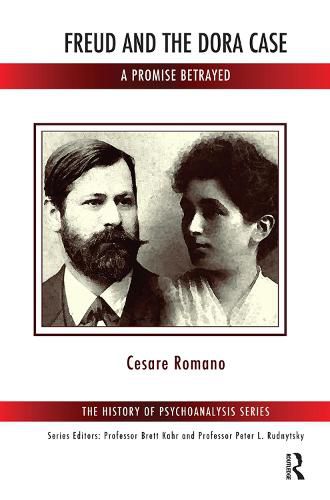Readings Newsletter
Become a Readings Member to make your shopping experience even easier.
Sign in or sign up for free!
You’re not far away from qualifying for FREE standard shipping within Australia
You’ve qualified for FREE standard shipping within Australia
The cart is loading…






Cesare Romano revisits Dora’s clinical case in light of Freud’s own seduction theory. His central thesis is that Freud failed to follow through with his initial proposition of confirming his theories on the traumatic aetiology of hysteria. He also suggests a new dating for the duration of Dora’s therapy, placing the beginning of the analysis within the context of Freud’s concurrent and recent life events. A detailed analysis of Dora’s first dream shows that Freud did not go back to Dora’s first infantile traumas, but stopped instead at the period of her infantile masturbation. In analysing this dream, Romano’s theory begins to take shape around the idea that Dora suffered an early trauma: possibly, a sexual abuse inflicted by her father. Drawing on Ferenczi, the author uses the notion of the ‘traumatolytic function of the dream’ to show that Dora, through her two dreams, was elaborating her early sexual trauma. Dora’s analysis is investigated alongside what was happening in Freud’s life at the time of the therapy.
$9.00 standard shipping within Australia
FREE standard shipping within Australia for orders over $100.00
Express & International shipping calculated at checkout
Cesare Romano revisits Dora’s clinical case in light of Freud’s own seduction theory. His central thesis is that Freud failed to follow through with his initial proposition of confirming his theories on the traumatic aetiology of hysteria. He also suggests a new dating for the duration of Dora’s therapy, placing the beginning of the analysis within the context of Freud’s concurrent and recent life events. A detailed analysis of Dora’s first dream shows that Freud did not go back to Dora’s first infantile traumas, but stopped instead at the period of her infantile masturbation. In analysing this dream, Romano’s theory begins to take shape around the idea that Dora suffered an early trauma: possibly, a sexual abuse inflicted by her father. Drawing on Ferenczi, the author uses the notion of the ‘traumatolytic function of the dream’ to show that Dora, through her two dreams, was elaborating her early sexual trauma. Dora’s analysis is investigated alongside what was happening in Freud’s life at the time of the therapy.